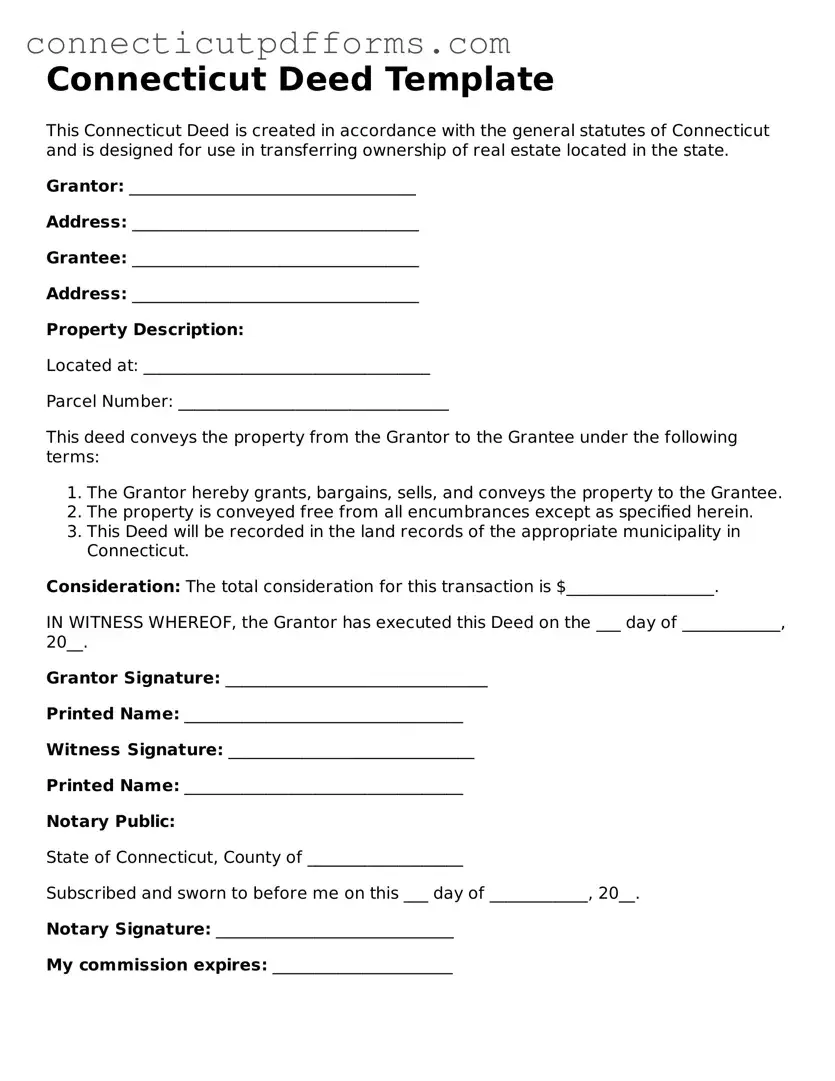Connecticut Deed Template
This Connecticut Deed is created in accordance with the general statutes of Connecticut and is designed for use in transferring ownership of real estate located in the state.
Grantor: ___________________________________
Address: ___________________________________
Grantee: ___________________________________
Address: ___________________________________
Property Description:
Located at: ___________________________________
Parcel Number: _________________________________
This deed conveys the property from the Grantor to the Grantee under the following terms:
- The Grantor hereby grants, bargains, sells, and conveys the property to the Grantee.
- The property is conveyed free from all encumbrances except as specified herein.
- This Deed will be recorded in the land records of the appropriate municipality in Connecticut.
Consideration: The total consideration for this transaction is $__________________.
IN WITNESS WHEREOF, the Grantor has executed this Deed on the ___ day of ____________, 20__.
Grantor Signature: ________________________________
Printed Name: __________________________________
Witness Signature: ______________________________
Printed Name: __________________________________
Notary Public:
State of Connecticut, County of ___________________
Subscribed and sworn to before me on this ___ day of ____________, 20__.
Notary Signature: _____________________________
My commission expires: ______________________
